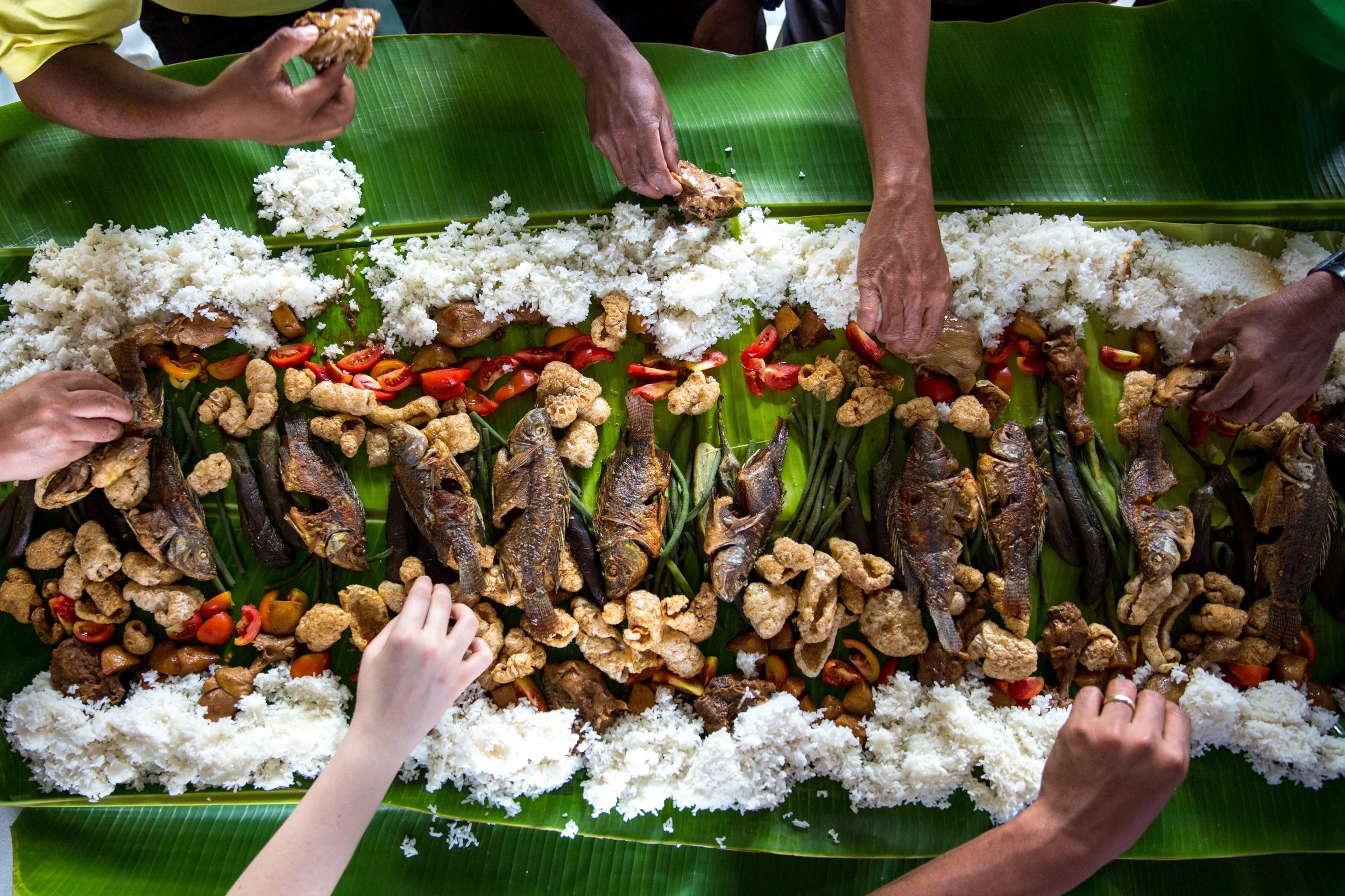
MODULE 3 - Section 1
Transportation, Lodging, & Meals
8-10 Minutes to complete section and related assignments
What you will learn:
To plan transportation for a team
Coordinate team arrival/departures
Team lodging
Team meals
Planning Transportation for a Team
When considering forms of transportation, it is important to consider safety, cost, and convenience (for you as a host, as well as the short-term team) based on the options available to you.
In addition to the range of options to consider is how involved you will be as the host with the team’s transportation.
Your involvement can range from:
Pre-arranging transportation and accompanying the team
Pre-arranging transportation but not accompanying the team
Providing the team with various transportation options to use, but not pre-arranging anything nor accompanying them
Letting the team to travel on their own
It is standard practice that hosts or qualified locals generally arrange and accompany the team when it comes to transportation, especially arrival and departure from the airport as applicable.
Keep in mind that the less involvement you have with a team and their transportation, the greater the need for clear communication regarding travel instructions, need for the team to have payment available, and general experience and familiarity the team should have traveling on their own in your context with that type of transportation.
For these reasons, as well as the ability to use travel time to build relationships with the team, leaving a team to their own devices is an available but rarely used option.
That said, the primary elements to consider in terms of transportation are the team’s arrival/departure and in-community transportation.
Available Transportation Options
Coach bus
City bus
Van
Taxi
Train
Metro
Uber/Lyft
Arrival/Departure
For the majority of short-term teams, flights are a common aspect to their team process. While arrival and departure are fairly self-explanatory, it is important to consider how the team will get from the airport to the community site or their place of lodging, and vice versa. In any scenario chosen, the team host is responsible for communicating any pertinent details related to arrival or departure with the team leader. Important details to communicate include:
How to navigate the airport, including customs, if applicable
Rendezvous points and who is meeting the team
How to manage luggage through the airport
Things to be aware of/look out for
In-Community Transportation
While team members move throughout the community, it is important for them to be able to do so safely. The host should share any specific safety tips for the chosen method of transportation and what to do in the event of an emergency, even if the host plans to travel with the team.
For both arrival/departure and in-community transportation, it is generally preferred that the host or another community teammate meet the team at the airport. This will not only provide a level of assurance to the team who has limited experience in your community, but it adds to the relationship building to be welcomed by you. When possible, accompany the team back to the airport as well.
Tips:
Ideally, teams fly into closest airport location to lodging/place of ministry.
If there is a significant cost difference - another airport further away can be used if time allows.
Consider which safety protocols should be communicated ahead of time for STTs.
Communicate airport-specific details to team leader prior to departure.
Provide info on entry/exit fees, visas, meeting locations, reasons for entering the country, etc.
Calculate predetermined transportation costs into corresponding budget categories.
Planning for Lodging
Consider this: A visiting team is also likely unfamiliar with your community. With that in mind, their place of lodging is more than just where they sleep at night. It’s their ‘home’ for however long they are visiting!
We all appreciate when our home is in good order and is in a place that is secure. As you prepare lodging for the team, consider the following measures to welcome them to their home-away-from-home:
Prioritize a safe location.
Proximity to ministry sites or at least close to access local transportation.
Cost is important, but not the only factor.
Consider lodging that includes breakfast. The convenience is often worth the additional cost.
If booking individual rooms, consider if lodging has a space the team can use for team time (debrief/devos). If lodging does not provide this, offer a space at a ministry site.
Factor the number and gender of the team when consider number of rooms. Families/couples on the team may also need to be considered.
potential lodging Options
Ministry Housing Location
Homestay
Camp or Retreat Facility
Apartment
Hotel
Hostel
Airbnb
Meals
Meals are a key part of your day as a host, and they can serve an array of functions ranging from merely functional (meeting the need to eat), to cultural exposure, to an opportunity to develop relationships (within the team, with you, or with locals).
In addition, the degree of coordination on the part of the host can be more or less involved depending on the host’s capacity, team capacity and timing of the team schedule.
Meal Options for Teams
Dine at a restaurant (with just the team)
Dine at a restaurant (with ministry partners)
Cater the food in
Purchase groceries for team members to prepare meals on their own
Employ local community members to cook for the team
Have the team cook with local community members
Include the team in a ministry event which includes a meal
As you consider which meal options to choose, consider the team schedule and which activities are before, during and/or after the meal time and what level of involvement and convenience may be needed.
-
You can select one approach or multiple approaches to meals throughout the team’s visit
Take advantage of the relationship building aspect of meals at least a couple times while the team is there to deepen connections with you/local team/locals/etc.
Consider what is mutually beneficial for you, the team, and the community
Teach team members culturally relevant information about meal times, as well as local etiquette
Consider the benefit of one or more meals to be used for teaching, learning, celebrating, building relationships, etc.
Consider available accommodations for team members with allergies
Avoid local water, if appropriate
-
The Short-Term Teams Dept. requests dietary allergies and food preferences from team members in advance of their arrival
We specify that allergies are those foods that have medical implications for a team member
We also advise that preferences may not be honored and flexibility is a must
If appropriate, advise cooks of team member allergies
It is appropriate to ask team members with difficult requests to bring their own food for occasions which cannot be accommodated
Balance “new” foods with “normal” choices. New foods and varied portion sizes can be difficult to adjust to, but are also great opportunities to take in the local culture and be flexible
Anyone preparing a meal for the team should be taking the proper hygiene measures (ie: wash hands frequently, hair nets, washing of all fruits/vegetables and cooking to adequate temperature)
Educate team members on appropriate dining out precautions for your context
Teach team members which water or sanitizing agent to use in order to clean their food
-
Be sure the restaurant is able to accommodate a team of your size
Ensure the restaurant will be open on the day/time you hope to visit
Consider restaurants of locals you know or are building a relationship with
Restaurants should be safe in terms of location and food preparation practices
For example: If you visit a local restaurant that you and your community team have historically experienced illness after eating, select another option
Let team members know their per person budget before they order
Familiarize yourself with the restaurant menu to make ordering food easier, if applicable
If time is short, select three menu options in advance (within budget as well) for team members to choose from, rather than allowing them to select from the whole menu. This makes meal time more efficient
For example: You select a restaurant with options of chicken, beef and vegetarian. Their drink options are Coke products and bottled water. Prior to arriving at/on the way to the restaurant you survey team members to determine their choices. This makes ordering a smooth/simple process
If you are in an extreme time crunch, order the meal in advance so it is already waiting for pick up or do a take-out option so the team can eat on their way to the next destination
Be sure the team also has slower-paced meal times as well so they can have times to rejuvenate





